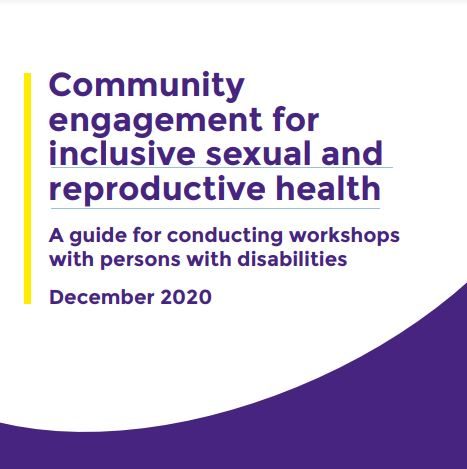Community engagement for inclusive SRH: A guide for conducting workshops with persons with disabilities
The World Health Organization (WHO) (2011) estimates that 1 billion (15%) of the global population living in the world today have a disability (2011). This increases to 19.2% for women and girls, and up to 220 million young people are living with a disability. Persons with disabilities have the same sexual and reproductive health (SRH) needs as other people. However, they often face barriers to information and services. These barriers are commonly associated with ignorance and negative societal and individual attitudes (including from healthcare providers), and can also be associated with high levels of poverty. Globally, persons with disabilities are likely to be the poorest of the poor, with disability being both a cause and a consequence of poverty.
“Nothing about us without us” is a key principle among persons with disabilities, and is clearly reflected in language of the UN Convention on the Rights of Persons with Disabilities. It underscores the importance of including persons with disabilities at all stages of policy development, programme planning, and implementation. Persons with disabilities are an important segment to our donors and the global agenda of leaving no one behind, and disability inclusive programming is a relatively new concept within the sexual and reproductive health sector. As the WISH consortium, we are at the start of a journey to understand what interventions are most effective to serve clients with disabilities. The WHO and United Nations Population Fund (UNFPA) suggest that existing interventions can be adapted easily to accommodate persons with disabilities. However, this requires involving persons with disabilities in programme design, implementation and evaluation to ensure that messages, services and models resonate with their needs and barriers.
Read the full guide here.
